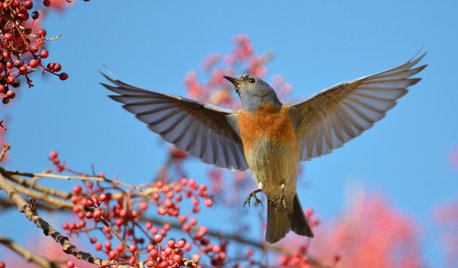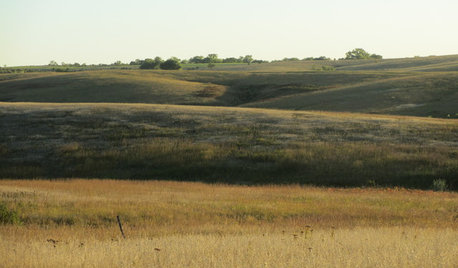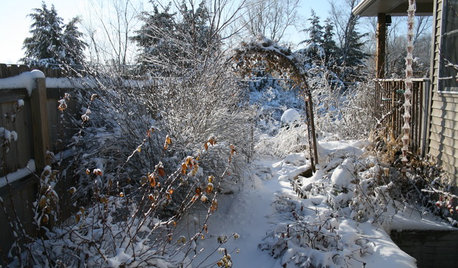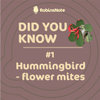Experiment - switching to Safflower seed to deter sparrows
paulsiu
14 years ago
Featured Answer
Sort by:Oldest
Comments (33)
rachel_frome_ky
14 years agopaulsiu
14 years agoRelated Discussions
What kind of seed isn't attractive to raccoons?
Comments (4)Racoons, being omnivores, eat almost anything. You probably cannot stop them. I would put up a sturdier feeder. Mine is a metal one, that closes with the weight of a squirrel, on a length of copper pipe. Usually works and not harasses by racoons, although they are common. In N. Jersey, they are having trouble with black bears raiding the bird feeders,so racoons seem like pikers to me. My feeder will be totalled if the bears move into S. Jersey....See MoreThe Magic Halo anti-house sparrow project
Comments (5)It's not my invention, it's basically a variation of the magic halo, which has been available for quite some times. You can see description at: http://www.sialis.org/halo.htm Unfortunately, the ring is not so effective against breeding pairs of HOSP. The site does have various ideas to deter nesting. I don't have experience with repelling grackles and starlings from nestboxes, but I do notice that starlings do not like to have something that block their view of the sky. A dome of some sort over suet feeder for example seems to deter them. However, it's hard to verify since Starlings don't seemed to come to my yard. Paul...See MoreAny Way to Attract More than Just Sparrows?
Comments (16)kilian, I'm between Ann Arbor and Ypsi and the lack of birds lately is really bothering me. My husband reminded me that our Cooper's Hawk may be the reason so tomorrow morning I'm going to move my feeders away from my windows and closer to our huge conifer lot line, where I had them last year. I, too, got more birds of all types in Spring and Summer. However, this year I am not feeding after June 1 and not before November. I said that last year, but hope I follow through this year. I do think the lack of snow and very cold weather recently is a contributing factor. I feed safflower in one feeder, BOSS in another, a mix in another, and 2 or 3 suet feeders. 2 of my neighbors also feed, but I haven't talked to them about their business. In this drab weather I am really disliking the BOSS shells piling up on the ground. I wish safflower seed was not more expensive because I would put it in all my feeders as House Sparrows here didn't eat it. The millet in my mix just stays on the ground and I rarely see a Junco or native sparrow anymore. Even the chickadees are rare. I want to feed everything that comes to my yard too -- one can keep so-called bully birds with a mix in its own feeder away from other feeders if one wants to. Squirrels will go to a mix on the ground too. I don't understand the lack of birds either, but we'll see if moving the feeders makes a difference. I have baffles on my shepherds hooks, and 18-inch domes on feeders hanging from my eaves to keep the squirrels on the ground. I want to feed the doves and squirrels but I want them on the ground. I can't help you, kilian. I think the weather is a factor for you. I will keep you posted and you do the same. We're really lucky with our weather, compared to other parts of the States, so I don't really want to complain too much. Pat ....See MoreBest tasting baking oil ? Can’t find safflower now
Comments (35)Isn't everyone talking about refined oils? Most have very little, if any discernible flavor, IMPE. Unrefined oils, OTOH can have quite strong flavors. I got some unrefined organic canola and sunflower oils from Aldi, and I thought the canola had an unpleasant, strong flavor, while the sunflower has a distinct sunflower seed taste. I often use extra virgin olive oil in baking sweet breads & cakes - usually mixed 1/2 & 1/2 with butter. It makes for very rich tasting results, and nobody has ever said they tasted olives....See Morenmgirl
14 years agochickadeemelrose
14 years agopaulsiu
14 years agochickadeemelrose
14 years agokendra2003
14 years agochickadeemelrose
14 years agoimstabile
14 years agochickadeemelrose
14 years agobbcathy
14 years agorachel_frome_ky
14 years agopaulsiu
14 years agonmgirl
14 years agopaulsiu
14 years agoimstabile
14 years agolitholad
14 years agochickadeemelrose
14 years agopaulsiu
14 years agopaulsiu
14 years agolitholad
14 years agopaulsiu
14 years agolitholad
14 years agostarlinka
14 years agorachel_frome_ky
14 years agostarlinka
14 years agonmgirl
14 years agorachel_frome_ky
14 years agoralleia
9 years agoparkernicole01
8 years agojoan754
8 years agohawkeye_wx
8 years ago
Related Stories

LAWN ALTERNATIVESStop Fighting the Patchy Lawn!
Here are 3 situations where a garden may be a better idea than more turfgrass
Full Story
GARDENING GUIDESHow to Bring the Joy of Bluebirds to Your Garden
Attract these beautiful songbirds with nesting habitat and food sources, including berry-producing trees and shrubs
Full Story
GARDENING GUIDESHow to Get Your Prairie On
Have a field day with your landscape, even if you've got just a few modern containers on a paved path
Full Story
LIFEHow to Outsmart Backyard Critters
Learn to think like a raccoon, skunk or squirrel to keep your home safe and your garden intact
Full Story
HOME INNOVATIONSConsidering Renting to Vacationers? Read This First
More people are redesigning their homes for the short-term-rental boom. Here are 3 examples — and what to consider before joining in
Full Story
LIFE6 Ways to Beat the Winter Blahs
Snow and dark days dampening your spirits? These ideas will have you looking on the bright side
Full Story
LANDSCAPE DESIGN7 Low-Maintenance Lawn Alternatives
Turf isn't the only ground cover in town. Get a lush no-grass lawn with clover, moss and other easy-care plants
Full Story
CONTAINER GARDENSHappy Houseplants, Happy People
Potted plants add life and beauty to a room. Learn easy ways to keep them healthy
Full Story
WINTER GARDENING6 Reasons I’m Not Looking Forward to Spring
Not kicking up your heels anticipating rushes of spring color and garden catalogs? You’re not alone
Full Story
MOST POPULAR7 Ways to Design Your Kitchen to Help You Lose Weight
In his new book, Slim by Design, eating-behavior expert Brian Wansink shows us how to get our kitchens working better
Full StorySponsored





joan754